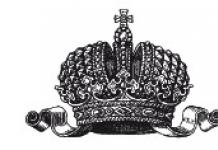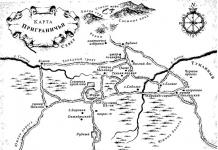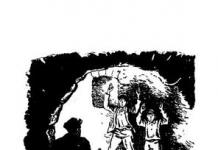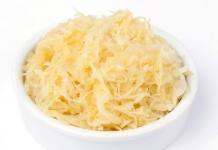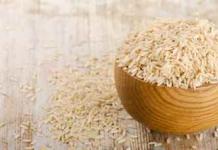Wood and straw ash - effective natural fertilizer containing potassium, phosphorus, calcium and other minerals necessary for plants. The composition of the ash differs depending on the plants used. Most of all potassium (up to 35%) is contained in the ash of sunflower stalks and buckwheat straw, the least (up to 2%) - in ash from peat and oil shale. Ash should be stored in a dry place, as moisture contributes to the loss of potassium. Gardeners use ash as fertilizer and as a pest and disease control agent.
People have known the benefits of wood ash for thousands of years. Even today, wood ash can be used in many different ways. So, don't throw these ashes away when cozy fireplace or fire pit fires are being burned. Here are ten ways to use wood ash.
Use in the garden to sweeten acidic soil if there are plants that, like soil, are slightly alkaline, says Oregon State University. But wood ash has so many nutrients that even acid-loving plants like tomatoes and blueberries can benefit from spraying it just because of the nutrients in the ash.
The use of ash as fertilizer
Why is ash useful for plants? Ash fertilizes and makes the soil more alkaline, its use in the garden increases disease resistance and plant survival.
There are two ways to fertilize with ash:
- Pour dry ash into a groove along the perimeter of the crown with a depth of 10-15 cm and immediately cover it with earth. For an adult tree, use about 2 kg of ash, and for a black currant bush - 3 glasses of ash.
- Make a solution of ash and, stirring continuously, pour into the grooves and also immediately cover with soil. For irrigation with ash, 100-150 g is needed per bucket of water. For tomatoes, cucumbers, cabbage, feeding with ash is 0.5 liters of solution per plant.
When and how to use ash as fertilizer?
For ease of use, you need to know: 1 tbsp. a spoon contains 6 g of ash, a faceted glass - 100 g, liter jar- 500 g.
Top dressing with ash tomato and peppers
Soil that is too acidic and soil that is too alkaline can force plants to get the nutrients they need to stay healthy. Use wood ash to discourage streets, slugs and unfriendly bugs from visiting the garden, says this an old house... Wood ash dries them up and eventually kills them.
Apply to the base of the plants or around the border of the garden area. Be a little careful not to settle too much on very young plants, because the potassium carbonate salt in the wood ash can damage them. Refresh ash after rain. Throw some in the compost heap. The potassium in wood ash encourages plants to flower and fruit.
When planting seedlings of cucumbers, zucchini, squash, it is enough to add 1-2 tbsp. tablespoons of ash, and for seedlings of sweet peppers, cabbage, eggplants and tomatoes, mix 3 tbsp with the soil. tablespoons of ash in the hole.
To improve the structure and fertilization of the soil in the fall, when digging, it is useful to introduce ash on clay and loamy soils, 100-200 g per 1 m2. The use of ash has a positive effect on the yield within 4 years.
Fertilize wood ash. This supports plant growth and leaves the leaves mottled or yellow. To make tea, take 5 pounds of ash and tie it in a cheesecloth bag. Close it, put 50 gallons in the barrel and fill it with fresh water. Cool for a few days, then feed the corn plants every week.
Humans have been making primitive soaps from wood ash mixed with tallow or animal fat for thousands of years. This process is interesting if it is used a little and uses a leach cylinder to extract alkali from wood ash, according to. Lye is not only good, but also for boiling homina, which is traditionally held outdoors over fire in large old pots.
It is good to pour wood ash under plants that do not react well to chlorine: strawberries, raspberries, currants, potatoes, the application rate is 100-150 g per 1 m2. The use of 800 g of ash per 10 m2 when planting potatoes increases the yield by 15-30 kg per one hundred square meters.
When transplanting indoor plants add 2 tbsp. tablespoons of ash per 1 liter of soil for cyclamens, geraniums and fuchsias.
Make sure the wood ash is made from deciduous trees such as oak, birch, beech, ash, or sugar maple. Coniferous ash, which comes from pine and spruce trees, is too resinous. Two stainless steel meat thermometers, one for liquor and one for lard Pots, pans and bowls. Melt the fat over low heat, then place the pot in a saucepan with cold water... When it cools between 85 and 95 degrees Fahrenheit, gently combine it with the fat. Stir constantly, but thoroughly, until the mixture is as thick as honey. Pour into soap molds lined with wax paper and set overnight wrapped in towel. Let the cake age at least two weeks before using.
- Put on rubber gloves and mix the lye and water in a bowl.
- The mixture is heated; let it cool down.
- Let the thaw cool to 120 to 130 degrees Fahrenheit.
- While it's cooling, place a bowl of lye solution in a pot of water.
Ash should not be used:
- as fertilizer on alkaline soils;
- under azaleas, camellias, rhododendrons, blueberries, cranberries, heathers, etc.;
- simultaneously with nitrogen fertilizers (manure, ammonium sulfate, ammonium nitrate, urea);
- from rubbish, painted wood, newspapers and magazines, as it contains chemicals and heavy metals.
Ash for pest and disease control
There are two methods of using ash for this purpose:
They only need food, water, sand to grind food in their esophagus, a place to run and firewood. Wood ash makes a fantastic dust bath for chickens. Chickens love to fluff in a mixture of wood ash and sand to clean their feathers and get rid of parasites.
Potassium carbonate, which helps melt ice, is more environmentally friendly than rock salt. Plums do not raise the salinity of freshwater bodies to dangerous levels, holes, eroding concrete, killing plants, or burning the legs of dogs and cats. Use wood ash as a scent. It can be used just like an open box of baking soda. Place a small bowl in the fridge to absorb these fridge odors. Change it every few days or so.
- dusting;
- spraying.
Plants are powdered with dry ash early in the morning, after dew, or by sprinkling them in advance clean water... Dusting with ash is useful for plants, since it:
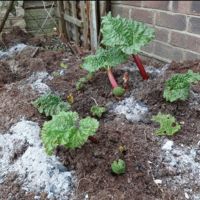
Ash solution for spraying helps against aphids, powdery mildew of currants, cucumbers, gooseberries, cherry slimy sawfly and other pests and diseases. Also used for spraying ash infusion.
Bob Vila states that wood ash can be used to polish silver and other metals. Take one cup of wood ash and add enough water to make a paste. Put on rubber gloves and rub the paste over the metal. Let it sit for a few minutes and wipe it off with a white cotton cloth or two.
Wood ash can also be used to fertilize your lawn. The minerals in wood ash are ideal for keeping grass green, lush and free from diseases and pests. Again, be sure to use hardwood ash as it contains many more nutrients than softwood ash, including phosphorus, potassium carbonate, and calcium.
Preparation of an ash solution: pour 300 g of sifted ash with boiling water and boil for 20-30 minutes. Then let the broth stand, strain, dilute with water to 10 liters and add 40-50 g of soap. Plants can be treated with this solution 2 times a month.
When working with ash, one must remember to protect the eyes and respiratory tract. Due to the fact that ash is a versatile and harmless fertilizer, gardeners very often use it on their plots.
Start using wood ash in your garden today!
As with everything else, safety is important when working with wood ash. Besides using hardwood, the wood used must be free of chemicals. It should not be pressured, painted, varnished, painted or the type that goes into a magazine that can burn all day. Ash must not come from pellets or wood briquettes.
How to prepare an infusion of ash
When collecting wood ash, remember that although the surface may be cool, it may still be smoldering on the inside and may continue to smolder for a very long time. The best place for storing wood ash is an ash pan with a lid, which says "Farmer's Almanac". Make sure it stays away from any flammable. Wear rubber gloves and safety glasses when handling wood ash.
Wood ash for fertilization has been used since ancient times, when it was not yet known. useful composition... Even now, it does not include a clear list of elements, because plants of different types and ages can be burned. You will learn more about what is fertilized with ash and what is included in its composition below.
What can be fertilized with ash
Sulfur, zinc, iron, calcium and magnesium, which are part of wood ash, are necessary for the normal growth of vegetables, ornamental or fruit trees and perennial plants... Due to the absence of chlorine, it is recommended to use it for crops that do not tolerate this substance. These include strawberries, currants, strawberries, raspberries, potatoes. Protects the seedlings of cabbage, zucchini, cucumbers and squash from diseases. You just need to add it to the hole when disembarking.
Wood ash is usually nitrogen free and should not be combined with nitrogen fertilizer. But the great news is that wood ash is a wonderful product that you probably have on hand, so use it today! It's eco-friendly, amazingly versatile, and free.
For more information on using wood ash, watch this video below. Excellent organic fertilizer when applied correctly to the appropriate plants. It can bring 13 natural nutrients into your soil and keep insects out. However, not all firewood can be used in this way. Find out more about what you can use for this purpose and when your garden is thriving.
Top dressing is ash for plums or cherries, and you only need to add it every 3-4 years. It can also help protect the garden from pests, such as aphids or flies, which are very fond of settling on carrots and onions. It is recommended to sprinkle crops in the morning, when there is still dew, or you can do this after preliminary spraying with water. The solution for processing is prepared from 300 g of ash raw materials and about 1 liter of boiling water. The resulting broth is then diluted with 10 liters of water.
Raw materials and methods for producing ash
It is recommended that preliminary soil tests be carried out annually. The results allow you to accurately apply the correct amount of fertilizer and soil amendments. Leftovers from debris, cardboard and pressure treated, painted or painted wood will contain chemicals and substances that harm plants, so make sure you only collect materials from burning natural, untreated and unpainted wood first.
Let the ashes cool overnight or longer before digging up and storing them in a metal jar with a tight lid to keep air out. This bath will help keep the coals from rebelling as long as they sit a little longer. Then use a medium mesh screen to sift through any pieces of wood. You can crush these pieces and discard them back in the jar, or dispose of them, whichever you choose. Ashes are corrosive because they are alkaline, like bleach, so protect your hands, eyes and lungs well while working.
Most ornamental shrubs and garden flowers such as roses, clematis, delphiniums, peonies, hyacinths and lilies thrive in alkaline or slightly acidic soil. Ash gives it such properties. For the nightshade family, it can also be useful. It just needs to be added when digging a planting site for seedlings of tomatoes, eggplants, hot or sweet peppers.
Spread the ash in the spring when the soil is dry, on a dry day with little or no wind. The lack of moisture is very important because if the ash gets wet before application, the water will leach out some of its nutrients. You can scoop it up and sprinkle it by hand around the stems of plants or at the base of the plant while you are wearing gloves. Manual application is the most effective method to provide the convenience of your fertilization where you want and in the right quantities. You can dispense large quantities with a spatula or shovel or other broadcast applicator.
Ash composition as fertilizer
This type of fertilizer is a non-combustible mineral residue that is obtained after burning organic materials - plants or wood. The quantitative and qualitative composition of the resulting powder is determined based on the raw materials used. If sunflower stems, grapevines or potato tops are used as it, then the ash will consist of 40% potassium. Other main organic elements are:
Remember to distribute the ash in moderation. Adding it to your garden or lawn will quickly pick up - it's not a slow release - and lead to a build-up of salt in the soil that harms rather than helps your plants. Limestone does the same thing as ash, so make sure your total uses of both fertilizers do not exceed 20 pounds.
Step 3 - store or dispose of unused ash
Wood ash also adds potassium to the soil. Applying ash annually is a lot, so it's best to do it when you do it to save it or get rid of it. You can return unused material to your metal container, sprinkle it on your compost pile, or otherwise dispose of it. However, do not let it build up in hills or boulders, as it will leach salts in the soil. As mentioned earlier, there are many cases where firewood fertilizer is not beneficial.
- calcium;
- phosphorus;
- manganese;
- molybdenum;
- iron;
- sulfur;
- zinc;
- copper.
Due to this composition, wood ash is considered a good phosphorus and potassium fertilizer for neutral or acidic soils. It makes up for the lack of trace elements in them. Due to the lack of potassium chloride, ash as fertilizer is beneficial for crops such as potatoes, tomatoes, strawberries and raspberries. It also does not contain nitrogen salts, which are necessary for plant growth. This can be attributed to the disadvantages.
Ash for pest and disease control
Plants such as potatoes, blueberries, cranberries, rhododendrons, azaleas, magnolias, pines and oaks can be adversely affected. Instead, stick to using it on things like lawns, tomatoes, and grass. Warning: Do not mix wood ash with nitrogen fertilizers! Hazardous ammonia gas is created when high nitrogen fertilizers are mixed with alkaline materials such as wood ash.
Fire is an element that can do great harm. environment... However, natural forest fires can indeed be very beneficial. Wood ash in horticulture contains many plant nutrients. It is important to be careful when choosing wood ash because some may have chemicals or are still hot.
The effect of this fertilizer is maintained for 2-4 years after it is introduced into the soil. Chemical composition wood ash as fertilizer is more valuable if it is obtained by burning buckwheat or sunflower. Deciduous trees, especially birch, are rich in potassium. There is a lot of calcium in peat ash, but there is little phosphorus in it. The composition of wood ash is also useful from burning wood in the stove. It is not recommended to use residues from burning plastics, newspapers and household waste.
When can and can not be used
Among the uses for wood ash is to neutralize acidic soil as the ash can act as a lime substitute. It can also act as a pest control agent. In this article, we'll share some clever ways to use wood ash to improve your garden and take care of your home.
# 1 - feed your garden plants
You might think that wood and fireplace ashes are just messy waste, but you might be surprised to learn how wrong you are. Wood ash has a very high potassium carbonate content, making it an excellent fertilizer choice. In addition to potassium, wood ash is calcium and magnesium. Moreover, it contains a small amount.
How to fertilize plants with ash - ways
Wood ash as fertilizer for indoor plants, seedlings and other horticultural crops is used in different types... The first way is to scatter it around tree trunks, between planting rows, under bushes or in holes. It is not recommended to use fertilizer only for very small shoots that do not yet have 3 leaves. So that the plant does not have a burn, it is better to replace clean ash with a mixture of it with earth. For one adult culture, about 2 kg of this component will be required. The feeding method itself looks like this:
- Prepare grooves around the barrel. Their depth should be about 10 cm.
- Pour fertilizer into the resulting trenches.
- Immediately close the grooves from above with a layer of soil.
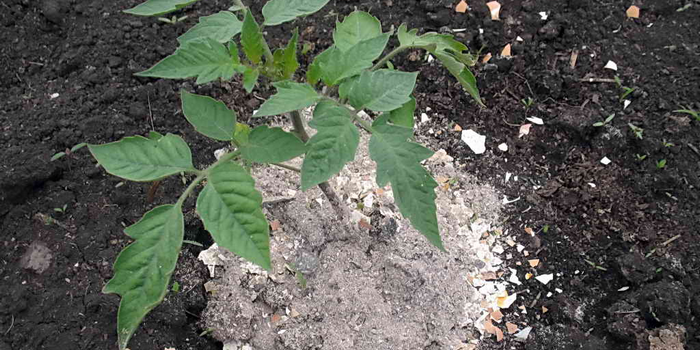
Before planting seedlings of tomatoes, eggplants or peppers, you just need to pour 4 teaspoons of dry ash into the hole and mix with the ground. The second option for feeding is ash infusion as fertilizer. It is used for spraying or watering plants in the garden. You can process tomatoes, cucumbers, cabbage with a solution. To prepare such a remedy, you will need:
- wood ash - 100-150 g;
- water - 1 bucket.
Both components are combined and infused for a couple of hours. Then you can already water the plants, having previously mixed the product. In this way, it is recommended to feed flowers, currant and raspberry bushes and vegetables. The optimal frequency of application is once every 2 weeks, and for both methods. Liquid fertilizer is good because the soil of the garden is additionally saturated with moisture.
You can increase the efficiency of fertilization by adding humus or peat. The ideal ratio with ash is 1: 4 or 1: 3. It is better to use coal ash. It is simply poured into a compost heap, which is organic product formed under the influence of bacteria and earthworms. Subsequently, such fertilizer is used the traditional way, i.e. lay in the holes or add when digging the beds.






















